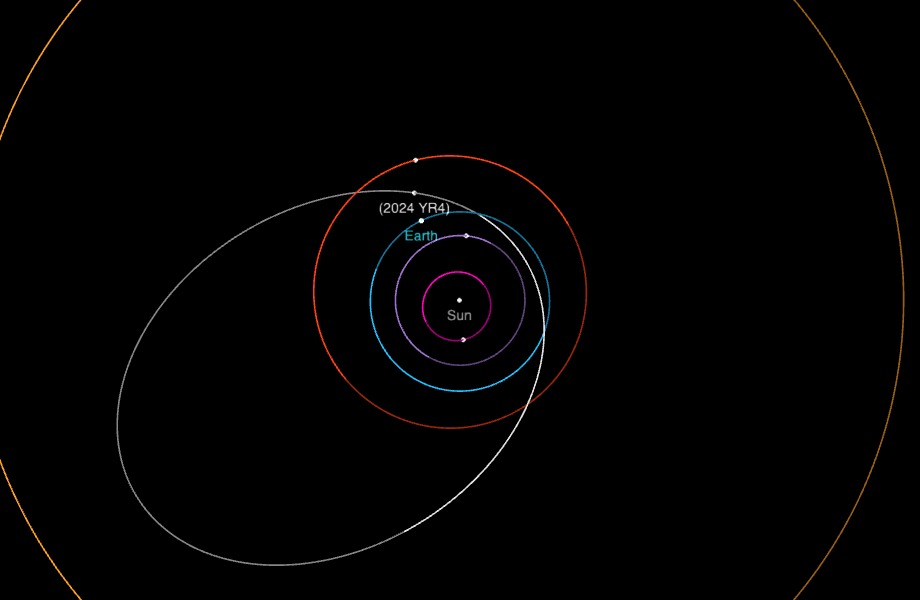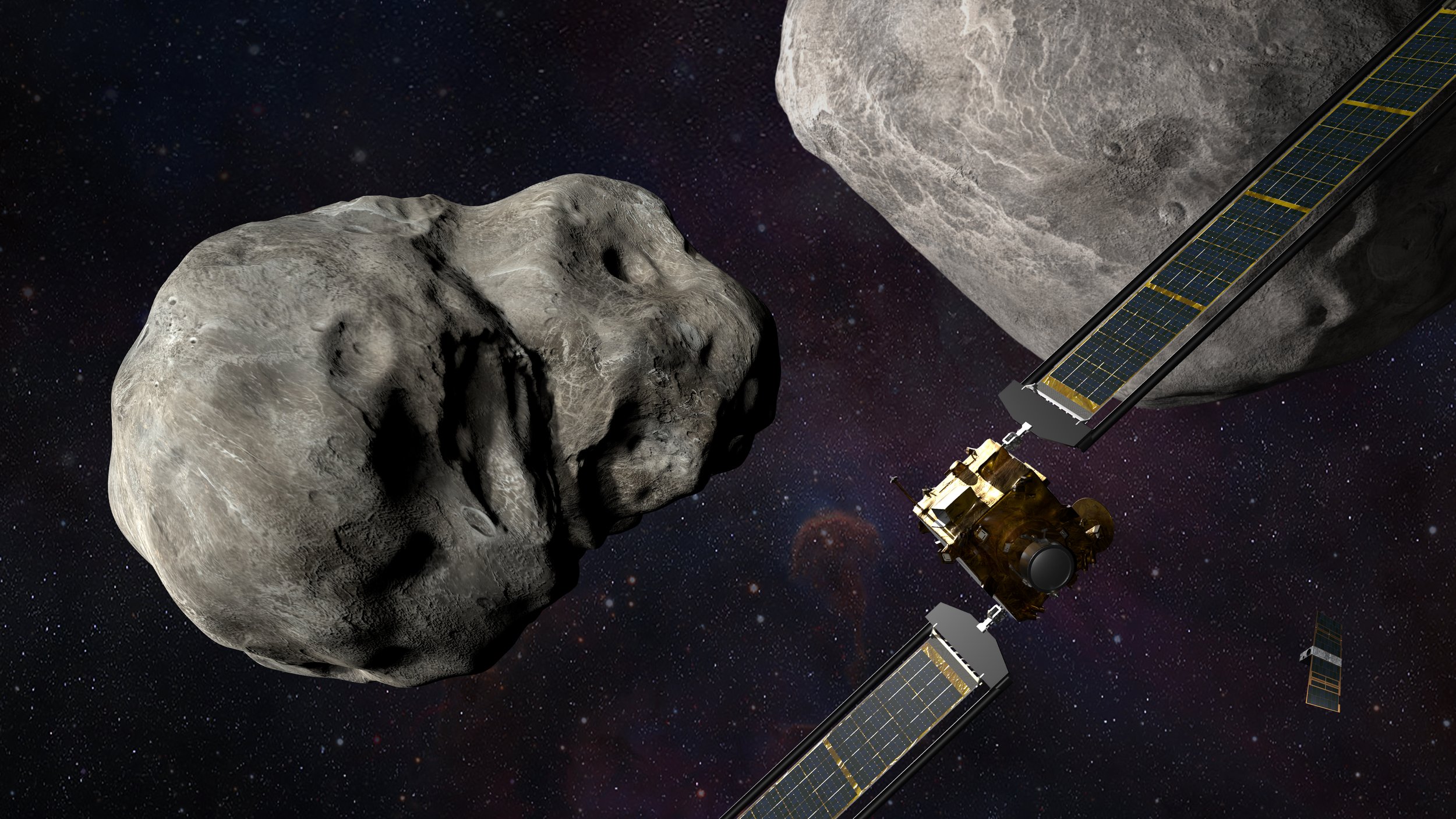In January, an analysis was released by NASA’s Center for Near-Earth Object Studies (CNEOS) that concluded the planet faced a not-zero percent chance that the asteroid ‘2024 YR4’ would hit the Earth in 2032. It’s the first time in years that a near-Earth object has reached a level above 2 on the Torino Scale which measures the risk level of asteroid impacts.
2024 YR4 “is estimated to be about 40 to 90 meters wide,” and will have “a more than 1% chance of impacting Earth on Dec. 22, 2032 — which also means there is almost a 99% chance this asteroid will not impact. These analyses will change from day to day as more observations are gathered,” NASA’s CNEOS wrote in a statement.
According to the Planetary Society, there are 37,000 near-Earth objects whose orbits and other characteristics are known to CNEOS, but 2024 YR4 is the only one with a chance of impact greater than 1 in 1,000. For perspective, Bennu, an asteroid with an impact chance of 1 in 2,700 when it passes by us 160 years from now poses the same probability of flipping a coin and getting heads 11 times in a row.
“Ratings of 1 are fairly common among newly discovered asteroids, but follow-up observations have always reduced that rating to 0,” the Society wrote. “Asteroid 2024 YR4’s rating of 3 is the second-highest an asteroid has ever reached. The only asteroid ranked higher was Apophis, discovered in 2004 and rated 4.
2024 YR4 was discovered on December 27th, 2024, by the NASA-funded Asteroid Terrestrial-impact Last Alert System (ATLAS) telescope in Rio Hurtado, Chile. The object had a close approach with Earth on Christmas Day, which is why it became bright enough to be detected in the asteroid surveys. The brightness levels were used to estimate the object’s size.
In the unlikely event that 2024 YR4 is on an impact trajectory, the impact would occur somewhere along a beltline across the eastern Pacific Ocean, northern South America, the Atlantic Ocean, Africa, the Arabian Sea, and South Asia.

The bad news
Those who have read about the Tunguska Event will know how much damage an asteroid this size could do if it didn’t break up substantially in the atmosphere. According to NASA, at 50 meters, or around 160 feet wide, the energy of an impact would be thousands of times that of the Hiroshima bomb, and if it reaches the highest end of the size estimate, could pack around 200 megatons of explosive force—as much as four of the largest thermonuclear warheads that were ever tested during the Cold War.
The impact, according to a recent analysis, of a medium-sized asteroid would mean up to 100 million tons of dust would be catapulted into the atmosphere and disrupt global photosynthesis for between 3 and 4 years, causing a collapse of terrestrial biomes, delicate phytoplankton in the ocean, and worldwide famine.
“For the most intense scenario, solar dimming due to dust would cause global surface cooling of up to 4˚C, a reduction of global mean rainfall by 15%, and severe ozone depletion of about 32%,” wrote the authors of a model composed via supercomputer at the Pusan National University in South Korea.
This paper used Bennu, an asteroid 500 meters wide, as an example, which is at least 5 times larger than 2024 YR4 and much more destructive. In fact, NASA rates a 500-meter-wide asteroid as wielding the power to end human civilization.
The good news
“Note that often, counterintuitively, the odds of impact go up before they drop to zero,” said Planetary Society Chief Scientist Bruce Betts. “This happened for Apophis and could happen for 2024 YR4. As more observations come in, the uncertainty in the area the asteroid will pass through decreases. But while that area still includes Earth, less uncertainty means the probability of impact increases”.
This, Betts says, is usually a temporary increase, and no object ever calculated with a Torino-scale rating of 2 more hasn’t dropped down to 1 or 0 given substantial observations. 2024 YR4 will approach close to Earth again in 2028 at about 20 times the Earth-Moon distance, when a much better opportunity to observe it will be available.
Additionally, NASA demonstrated just 3 years ago that if humanity ever needed to defend our world against a potential asteroid impact, nudging one off its collision course with Earth can be done.
DART or the Double Asteroid Redirection Test, was a smashing success; literally.
DART was the first mission conducted by the Planetary Defense Coordination Office at NASA. The target for the DART demonstration was a harmless asteroid called Didymos, which has a satellite asteroid about one-fifth its size orbiting it every 11 hours or so called Dimorphos. DART, slammed into Dimorphos head-on, and successfully altered the orbit of the larger Didymos as a result of gravity by a small degree.
If we had to deflect 2024 YR4, it wouldn’t take much more than a nudge from another suicidal satellite to save humanity. WaL
We Humbly Ask For Your Support—Follow the link here to see all the ways, monetary and non-monetary.
PICTURED ABOVE: An artistic illustration of the DART spacecraft approaching Dimorphos. PC: NASA/JPL



